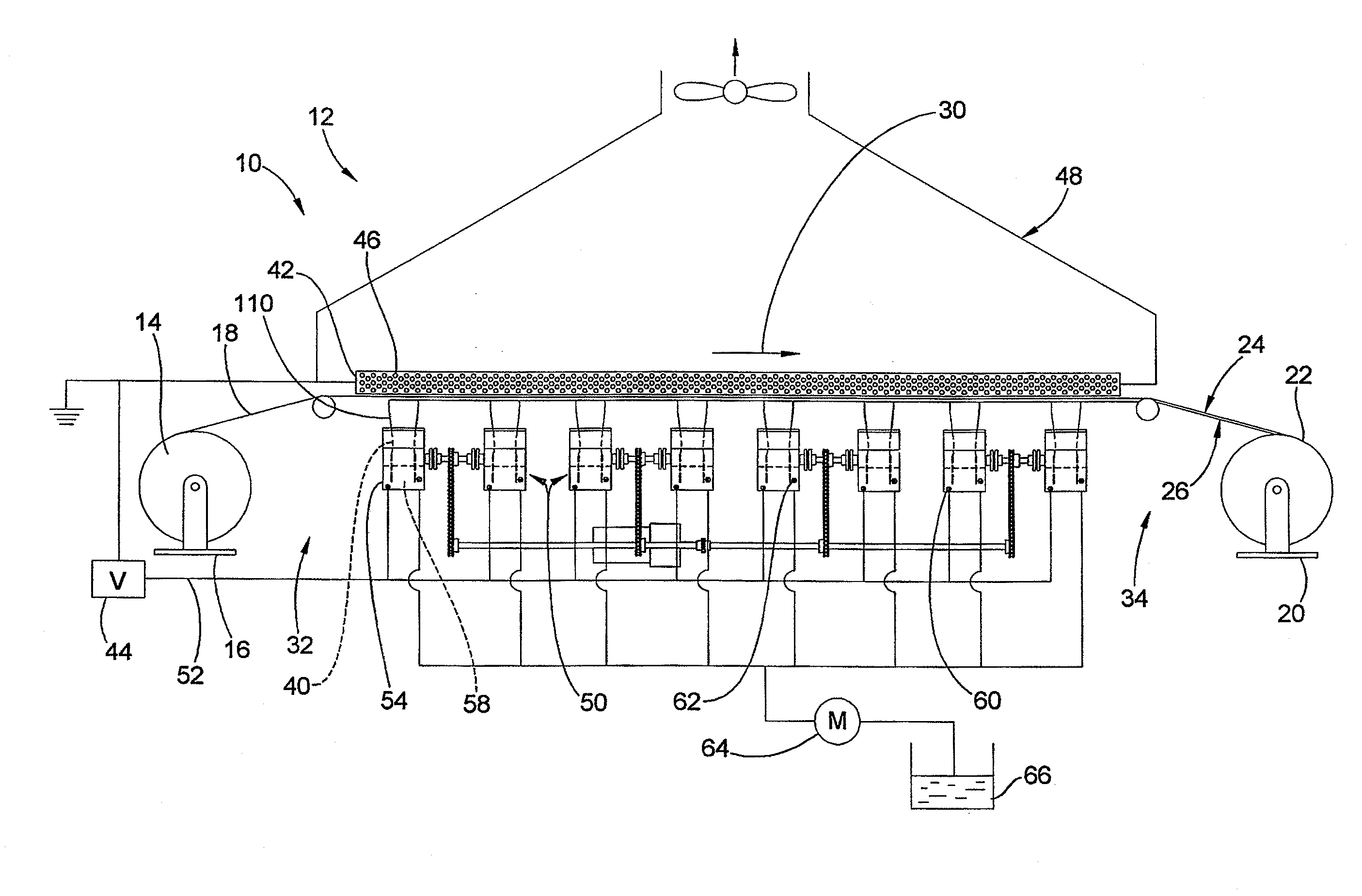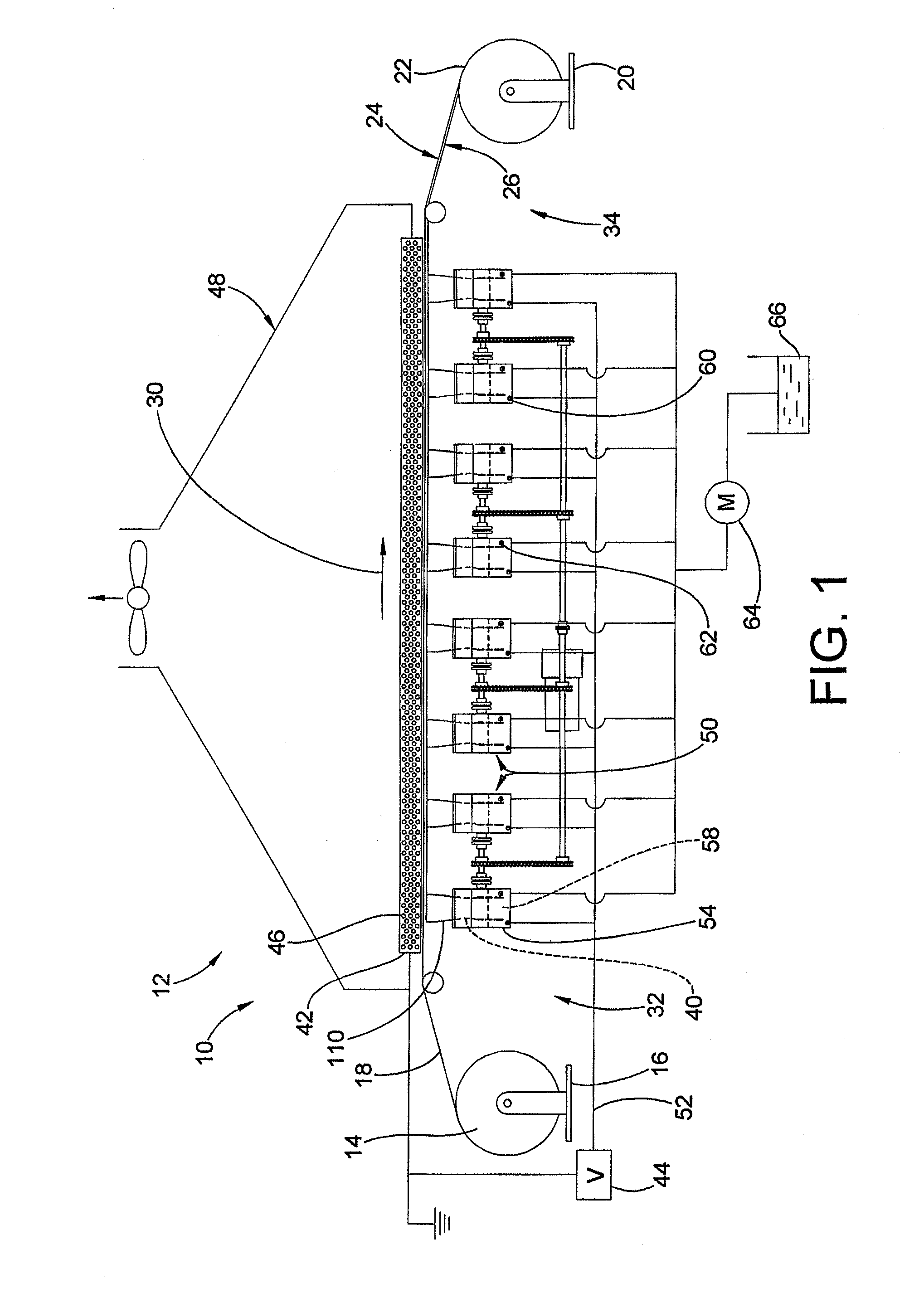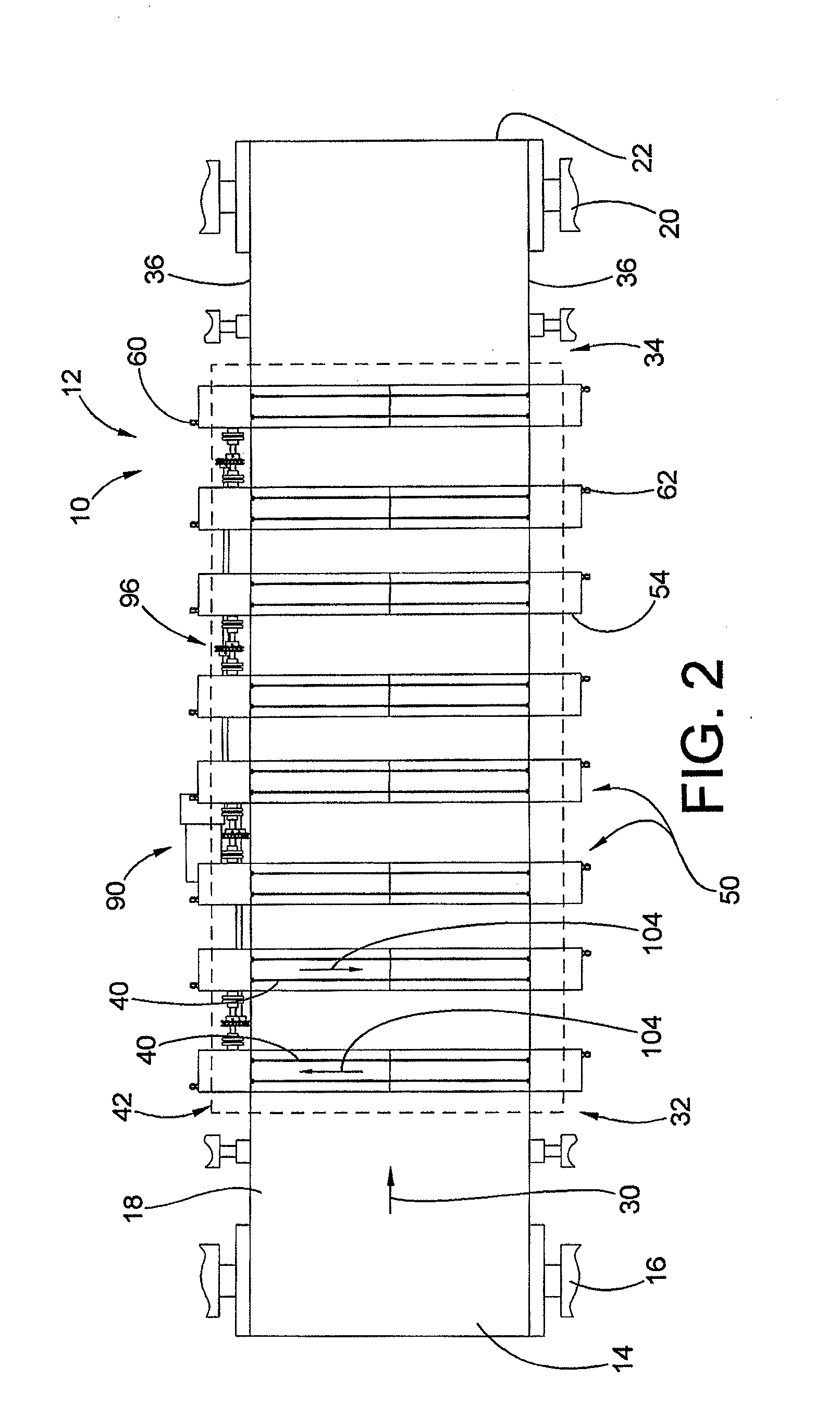Filtration Medias, Fine Fibers Under 100 Nanometers, and Methods
a technology of fine fibers and filtration media, applied in the field of polymeric fine fibers, can solve the problems of unfavorable change of filtration characteristics, and achieve the effect of preventing sufficient delamination of the fine fiber layer
- Summary
- Abstract
- Description
- Claims
- Application Information
AI Technical Summary
Benefits of technology
Problems solved by technology
Method used
Image
Examples
example 1
[0158]Tests were performed on of a commercially available filter media composite product Donaldson Company, Inc., Minneapolis, Minn. Considering the media was contained in a cartridge, filter media samples were carefully removed from a cartridge for testing. Observations showed that the filter media composite included a coarser filter media substrate material and a layer of fine fibers deposited thereon. As shown in the scanning electron-microscope image of FIG. 18, fiber diameter of the fine fibers in the fine fiber layer was observed to typically greater than 100 nanometers and there was not a significant amount of fine fibers with diameters of less than 100 nanometers.
[0159]The composite media included a basis weight of 71.03 lb / 3000 ft2; a Frazier Permeability of 13.5 (CFM @ 0.5″ WG); and a caliper thickness of 0.3 mil. Testing results indicated that the filter media could qualify as MERV 14 (based on fractional efficiency data), with an initial pressure drop of 362.87 Pa.
[0160]...
example 2
[0161]Tests were performed on the substrate filter media of example 1 for purposes of attempting to better evaluate the filtration characteristics of the fine fiber layer. Specifically, samples of the commercially available filter media composite product Donaldson Company, Inc., Minneapolis, Minn. were first soaked in isopropyl alcohol to dissolve and thereby remove the fine fiber layer. The fine fibers appeared to completely dissolve in isopropyl alcohol, which is why isopropyl alcohol was chosen as the solvent. The samples were then allowed to dry to evaporate the isopropyl solvent and then the samples were tested.
[0162]The substrate media included a basis weight of 71.27 lb / 3000 ft2; a Frazier Permeability of 15.3 (CFM @ 0.5″ WG); and a caliper thickness of 0.3 mil. Testing results indicated that the filter media could qualify as MERV 13 (based on fractional efficiency data), with an initial pressure drop of 378.13 Pa.
[0163]Pore size and fractional efficiency test data for Exampl...
example 3
[0164]Tests were performed on an uncoated, relatively low grade cellulose fiber material substrate filter media that was used as the substrate material for the fine fiber filter media composite of Example 4. The substrate filter media was purchased from Ahlstrom of under the brand / model designation AFI-23N-4. Thus, there was no need to prepare the sample through an isopropyl alcohol soak as was done for Example 2.
[0165]The substrate media included a basis weight of 59.8 lb / 3000 ft2; a Frazier Permeability of 23.4 (CFM @ 0.5″ WG); and a caliper thickness of 0.4 mil. Testing results indicated that the filter media could qualify as MERV 12 (based on fractional efficiency data), with an initial pressure drop of 242.63 Pa.
[0166]Pore size and fractional efficiency test data for Example 3 were as follows and / or are shown in FIGS. 14 and 16:
TABLE 8Pore size (μm)Test Number123MeanSDMax40.639.242.640.811.68Mean12.012.212.012.0730.13Smallest2.522.472.382.45670.07
TABLE 9Cumulative Filter Flow, ...
PUM
| Property | Measurement | Unit |
|---|---|---|
| diameter | aaaaa | aaaaa |
| diameter | aaaaa | aaaaa |
| pore size distribution | aaaaa | aaaaa |
Abstract
Description
Claims
Application Information
 Login to View More
Login to View More - R&D
- Intellectual Property
- Life Sciences
- Materials
- Tech Scout
- Unparalleled Data Quality
- Higher Quality Content
- 60% Fewer Hallucinations
Browse by: Latest US Patents, China's latest patents, Technical Efficacy Thesaurus, Application Domain, Technology Topic, Popular Technical Reports.
© 2025 PatSnap. All rights reserved.Legal|Privacy policy|Modern Slavery Act Transparency Statement|Sitemap|About US| Contact US: help@patsnap.com



